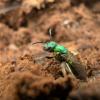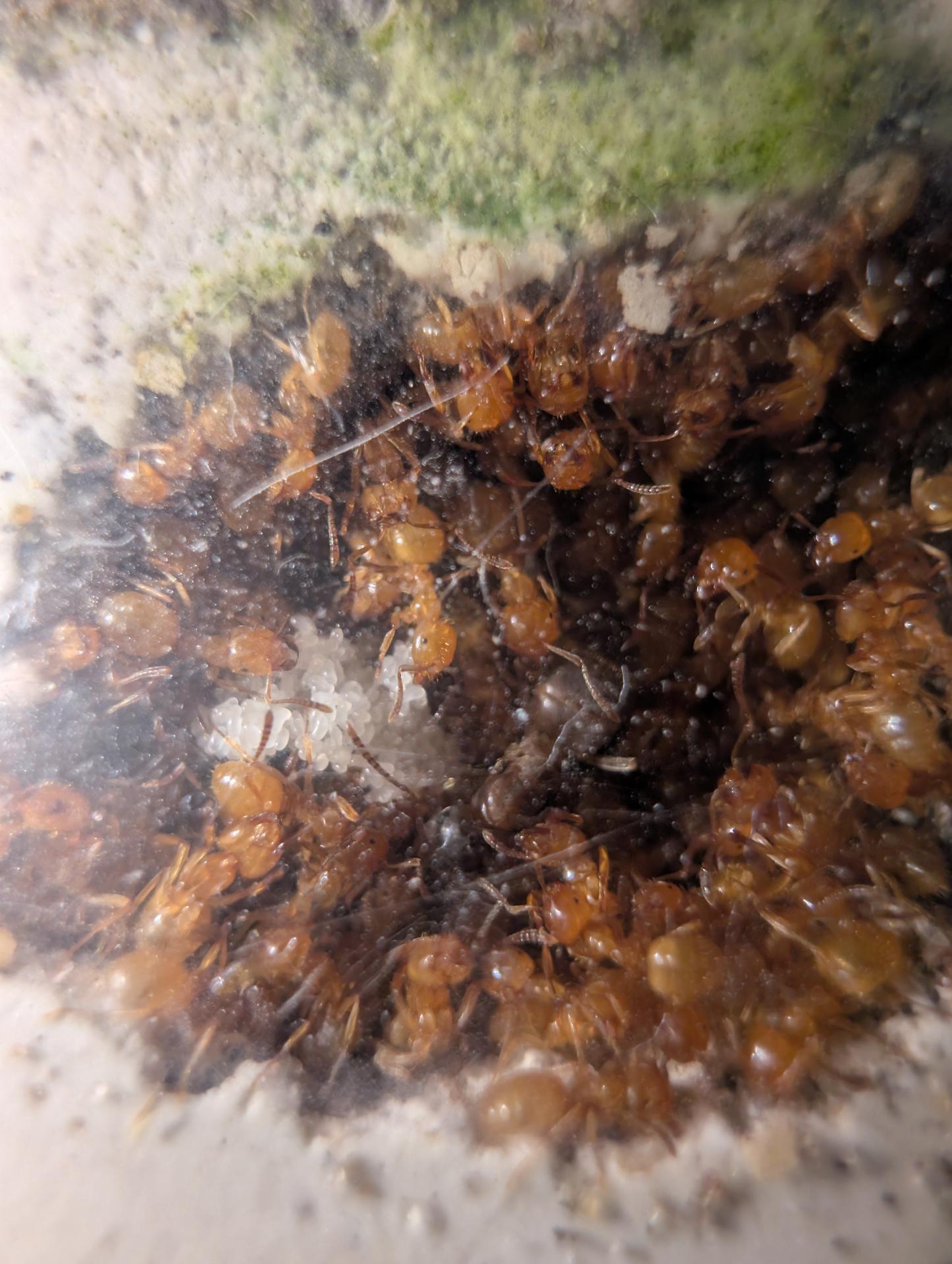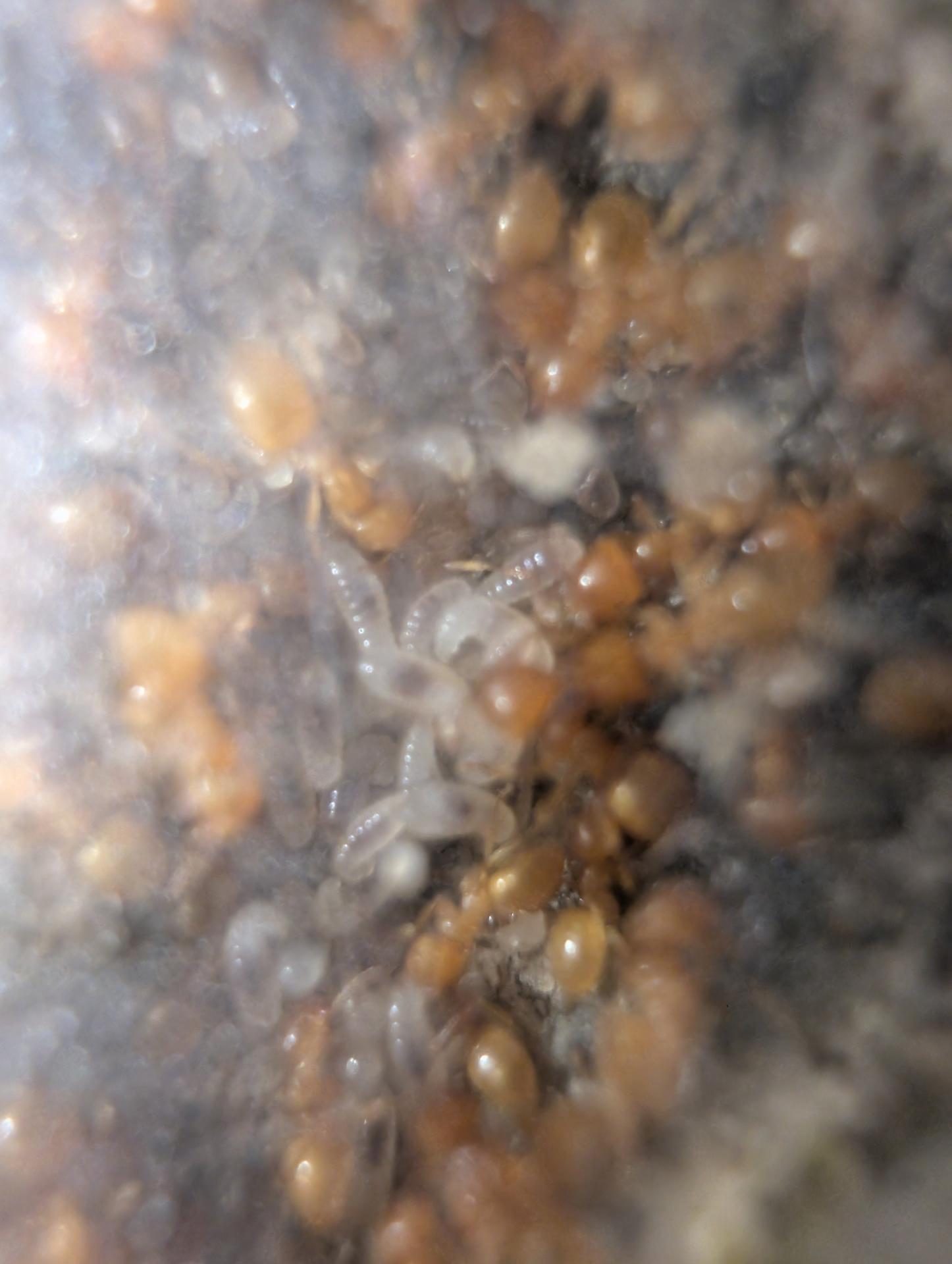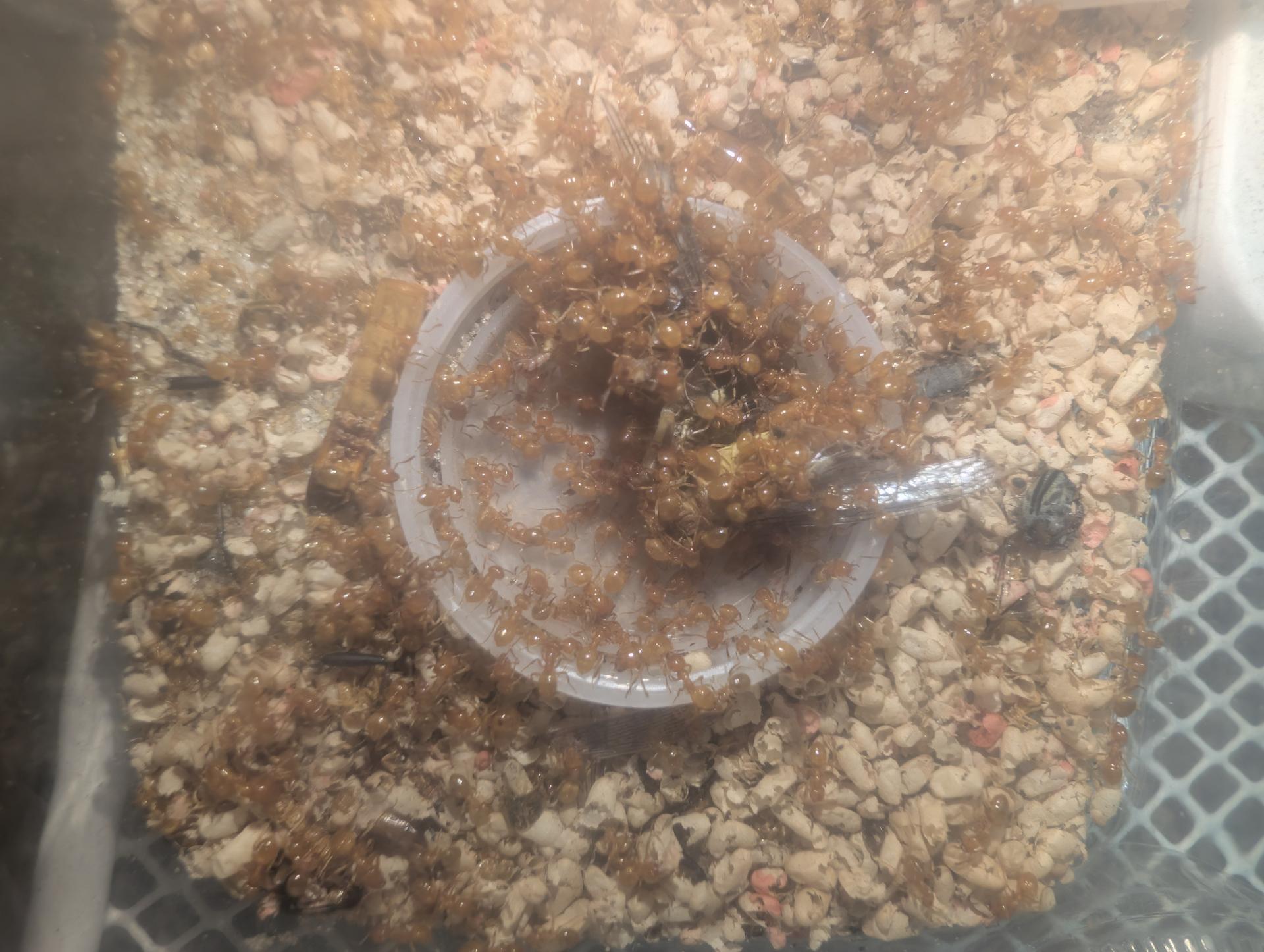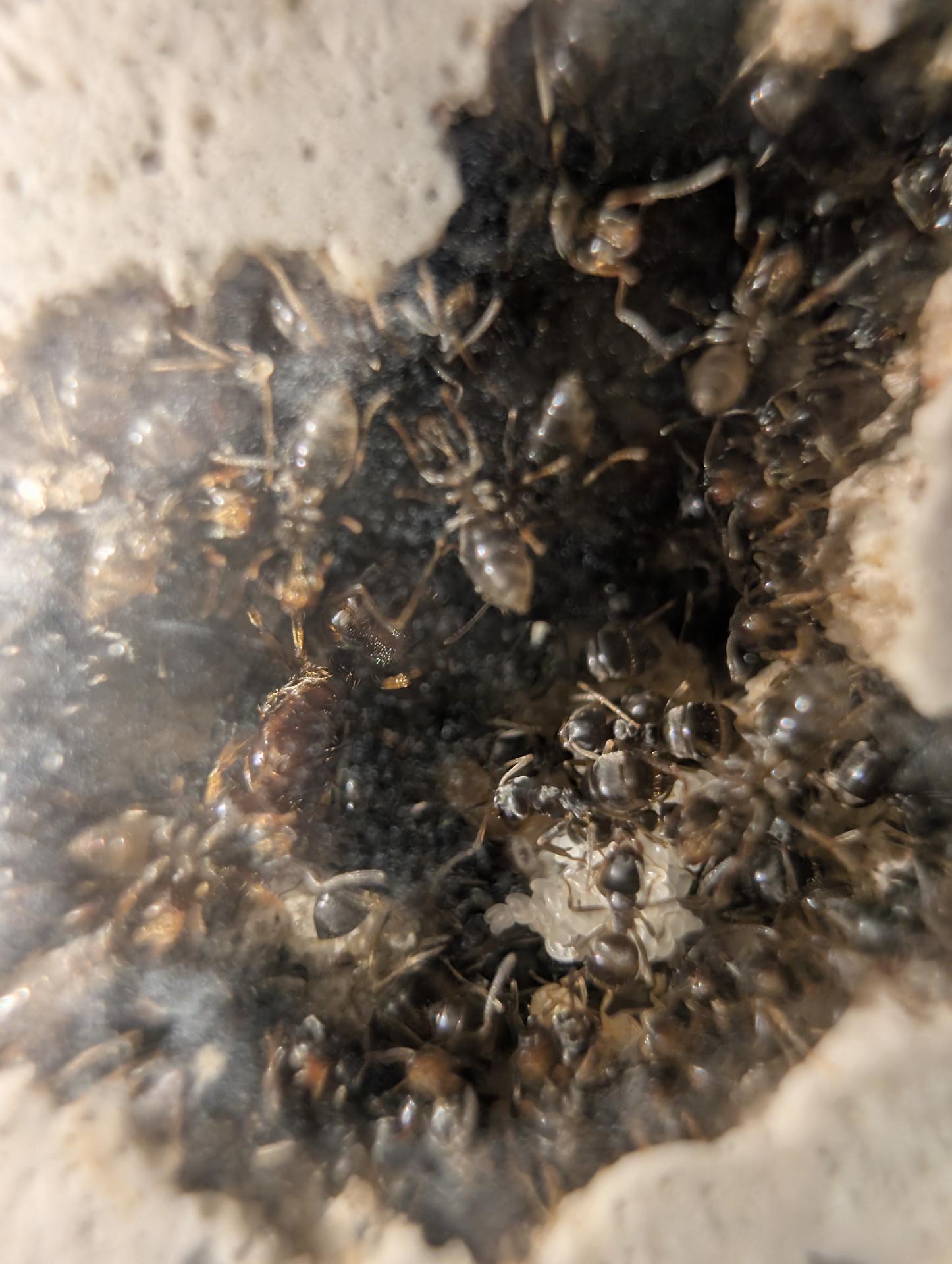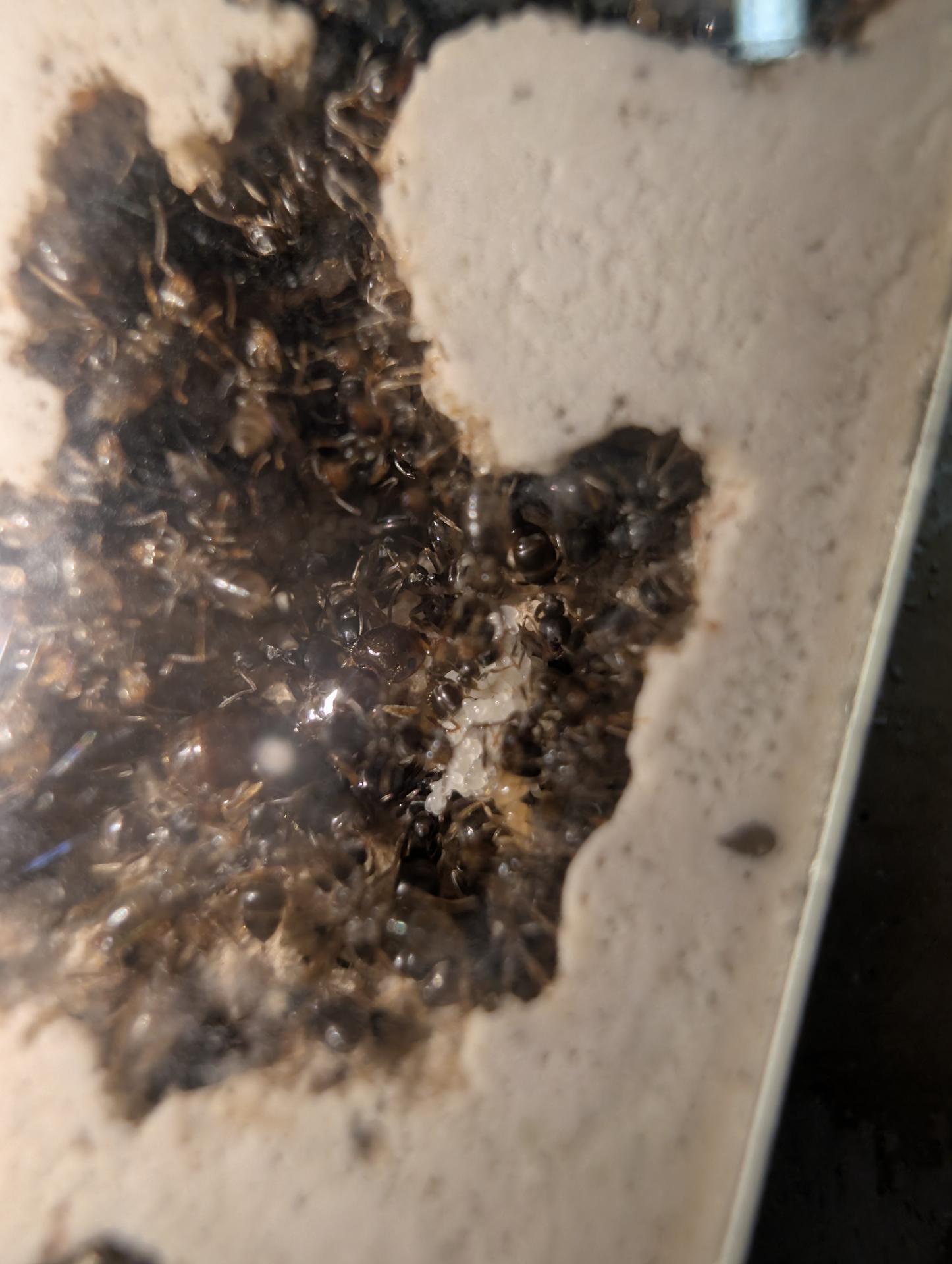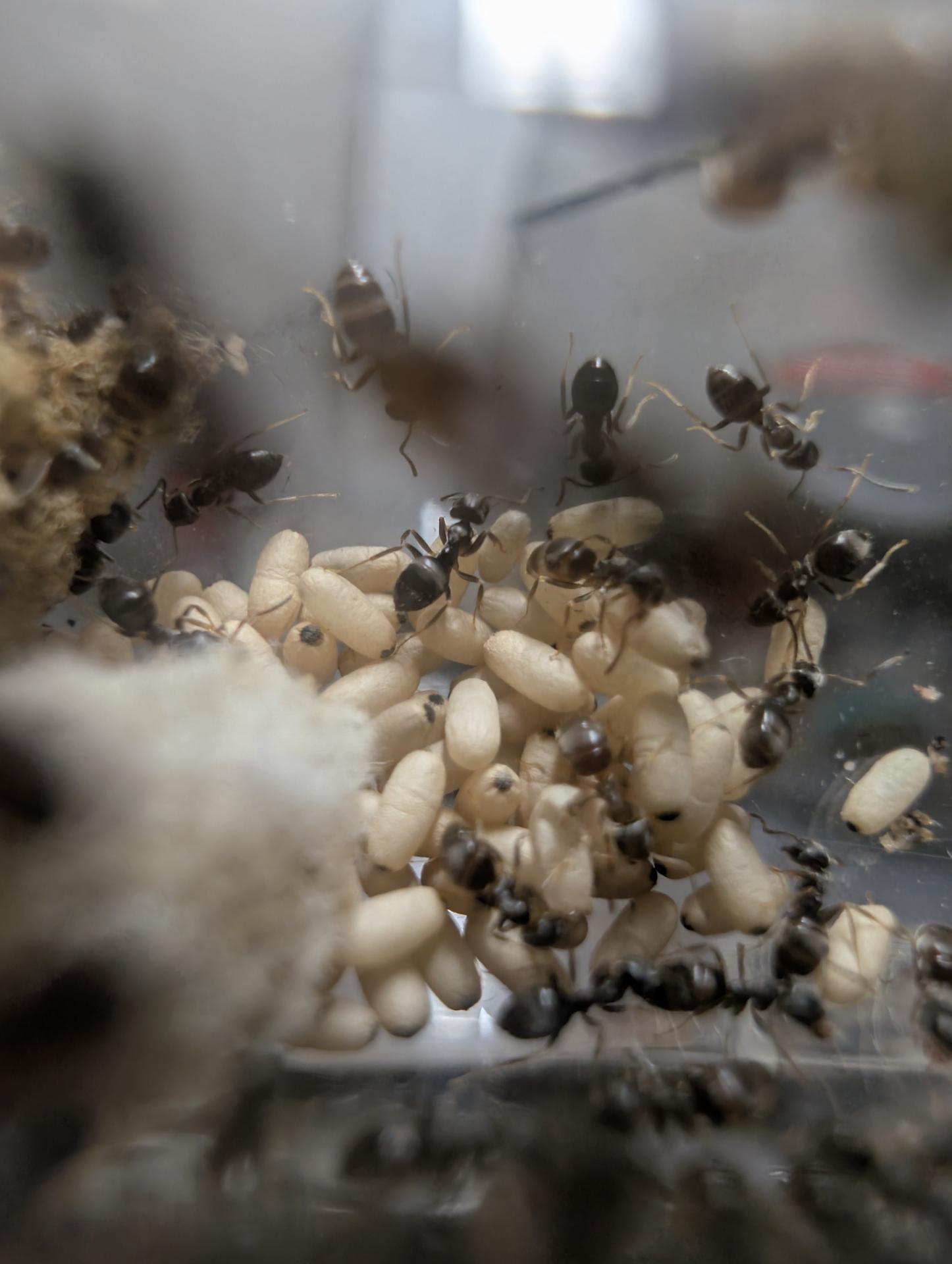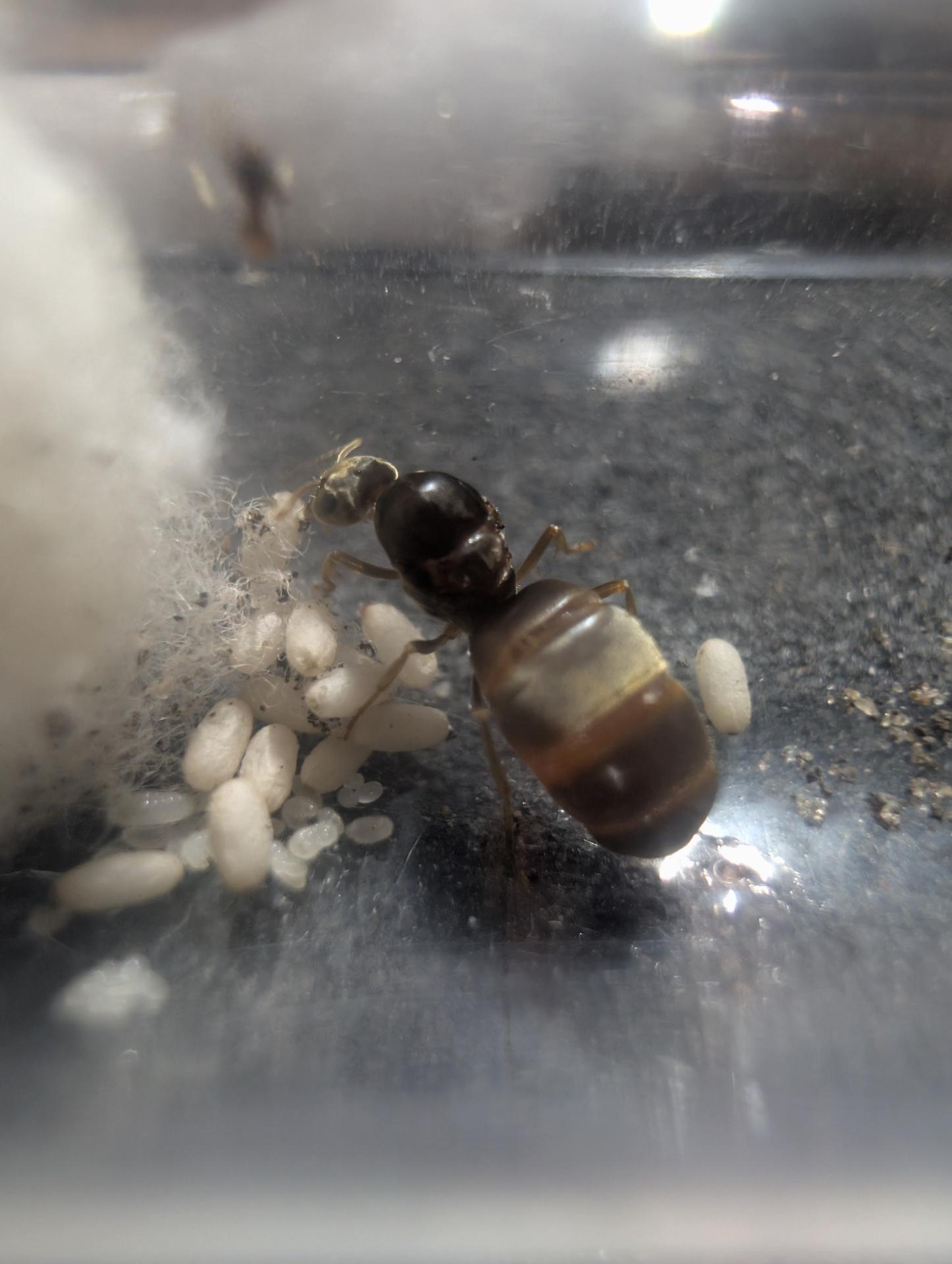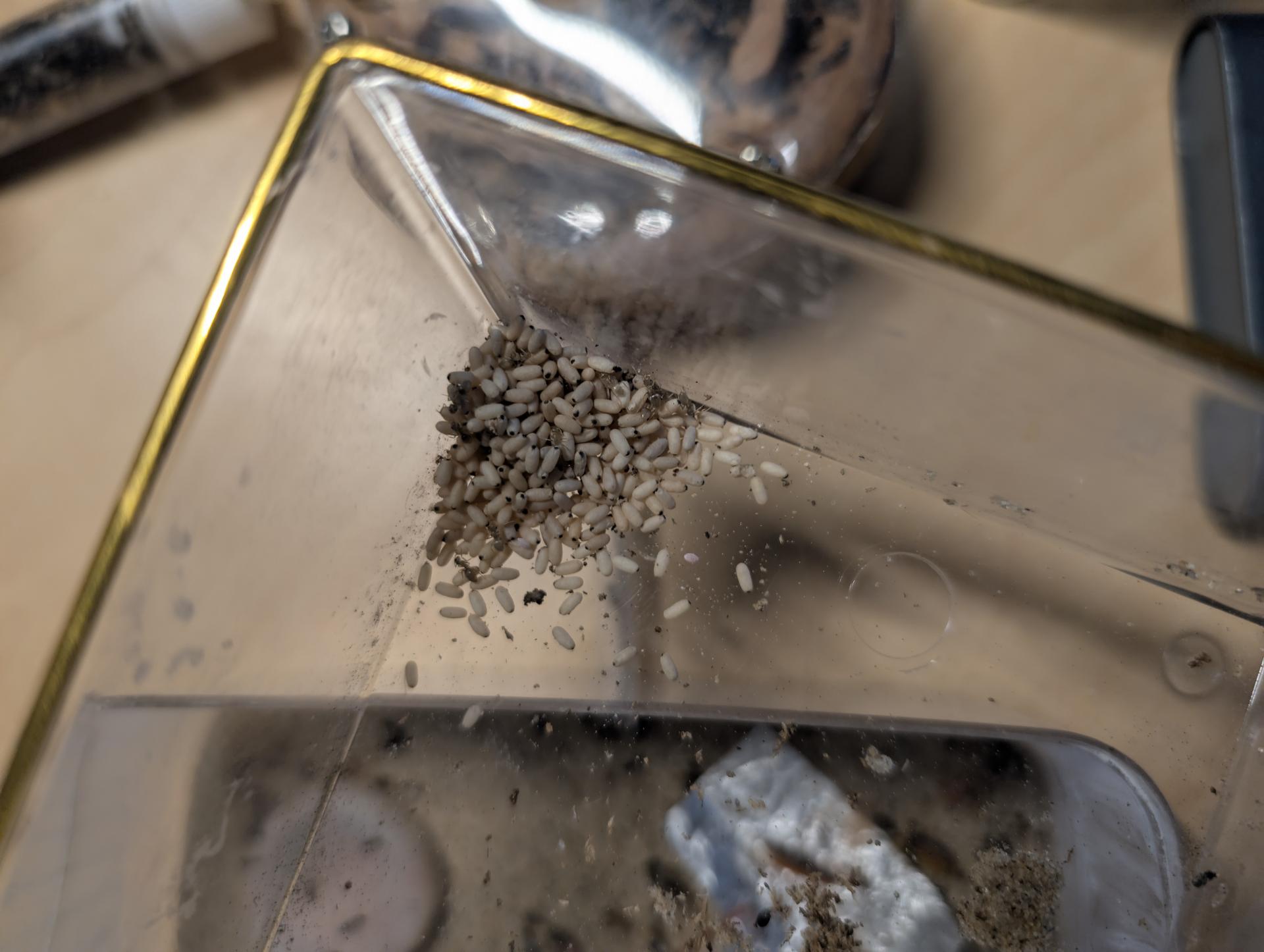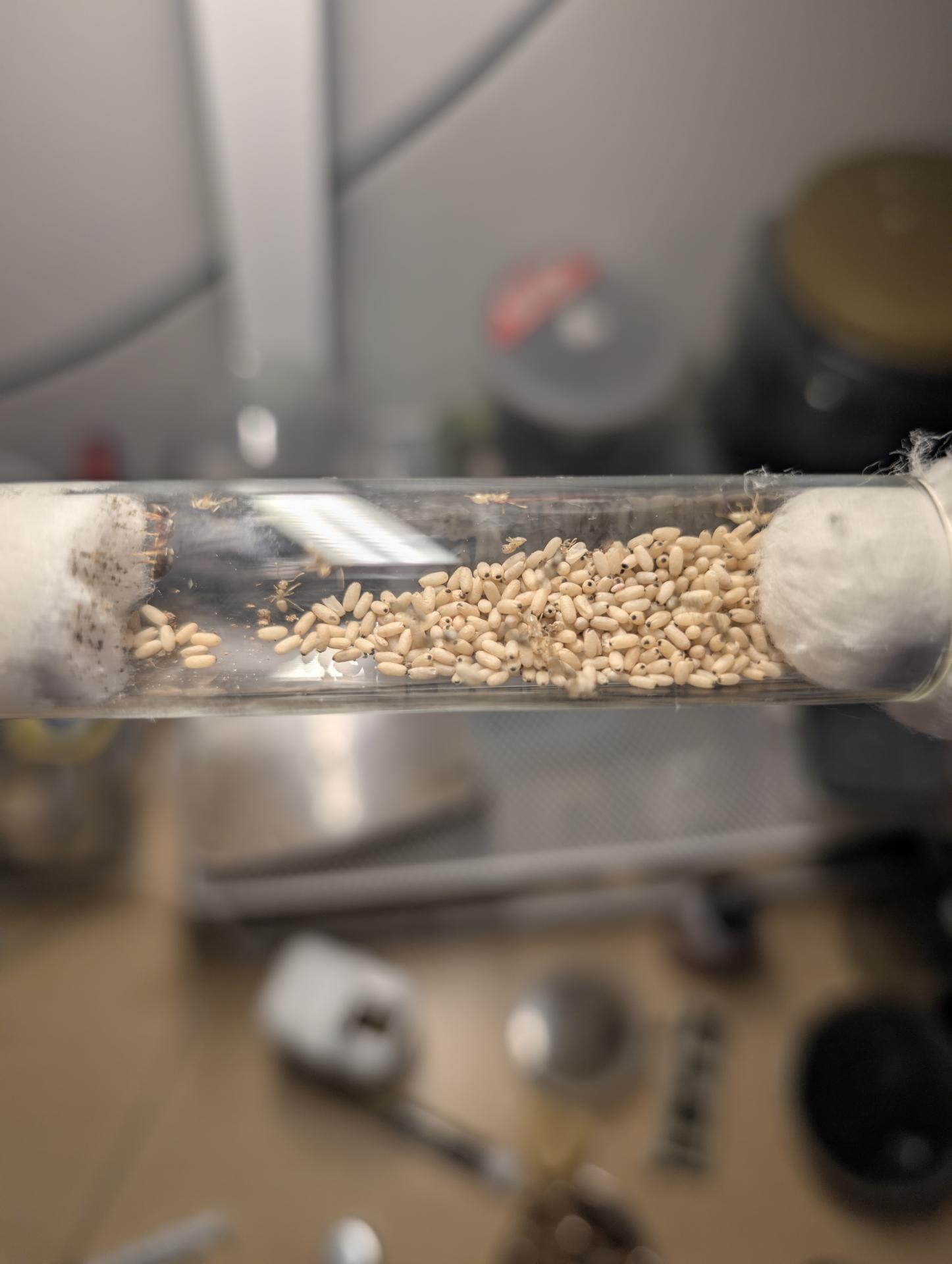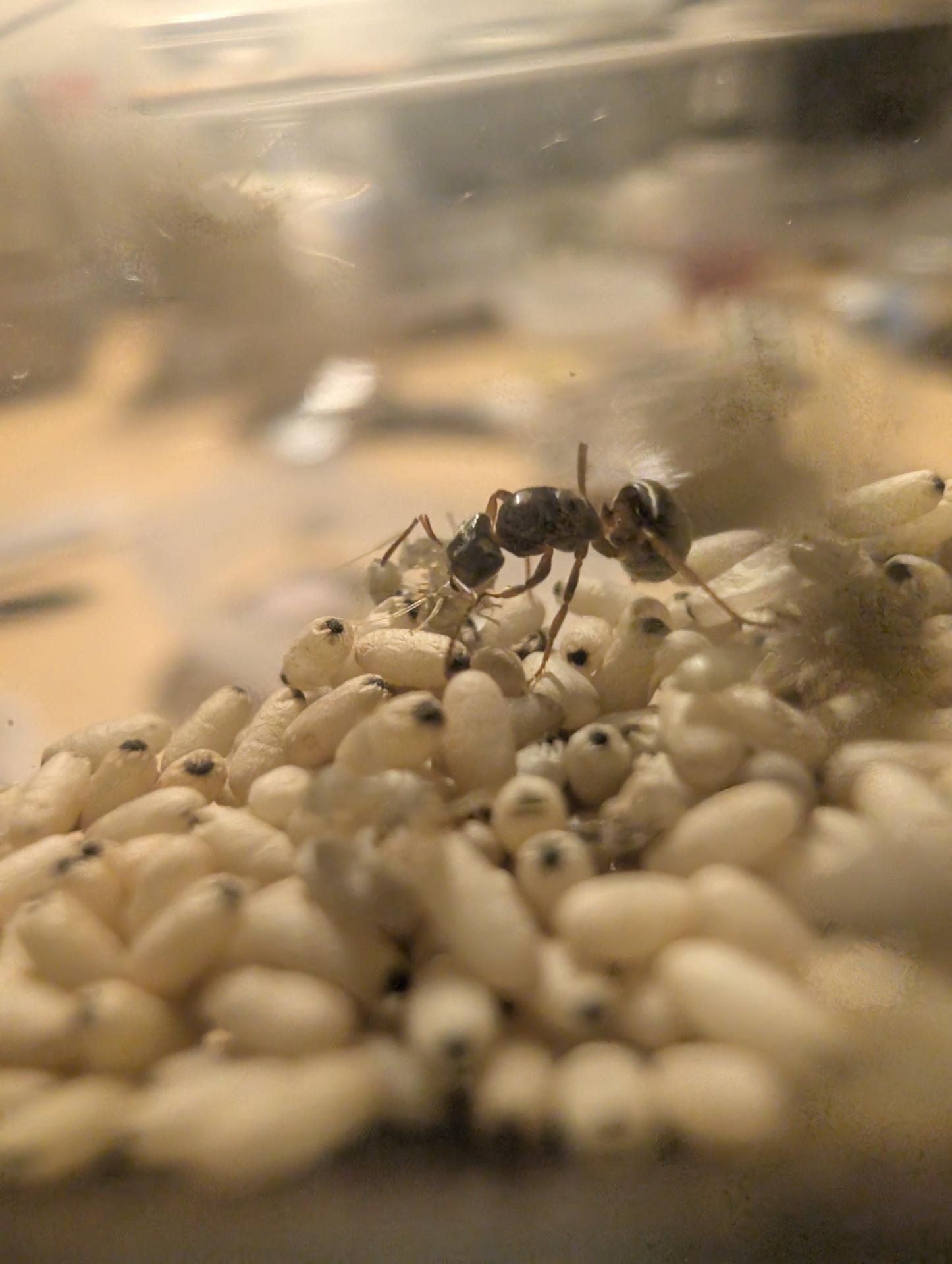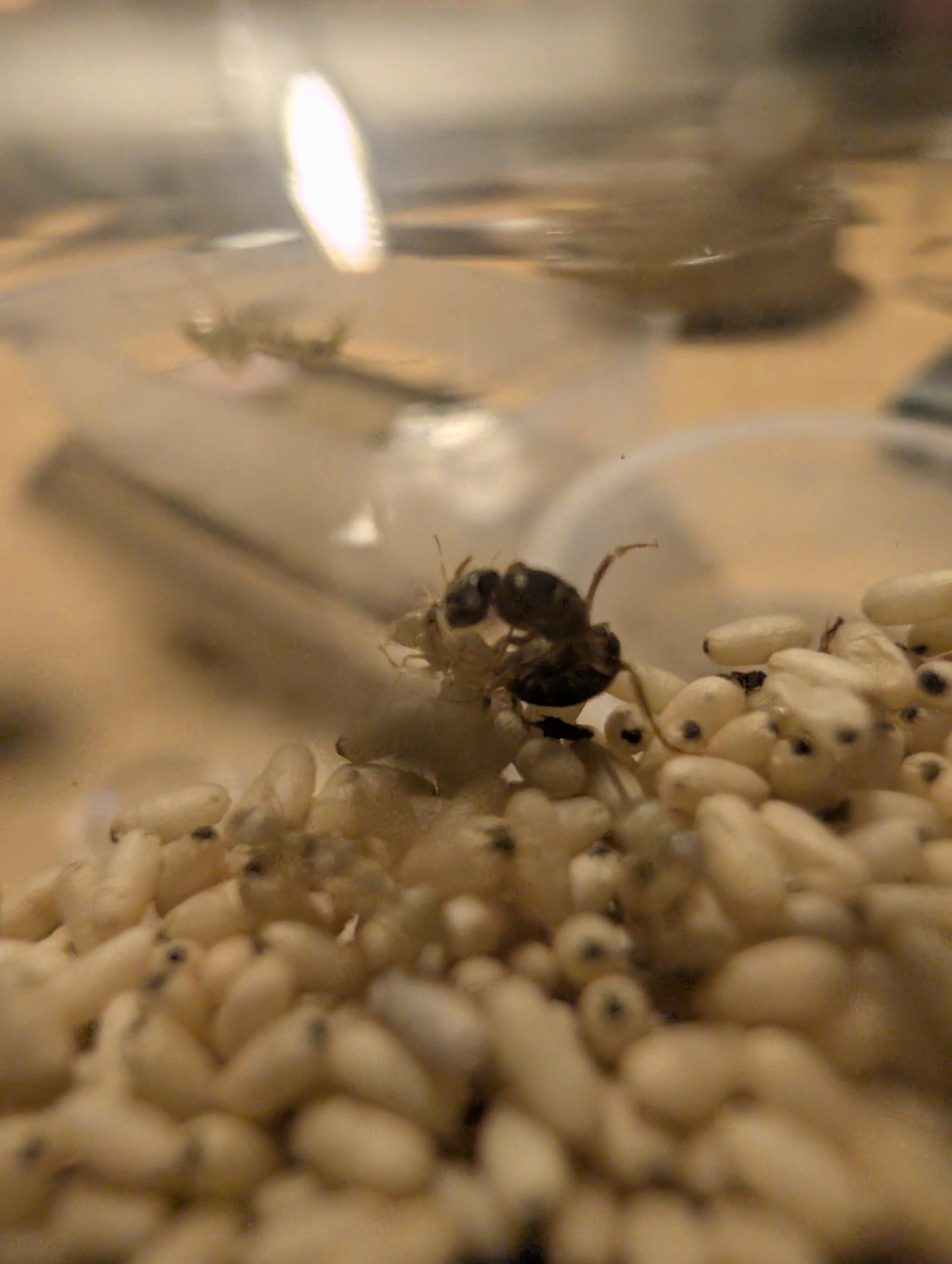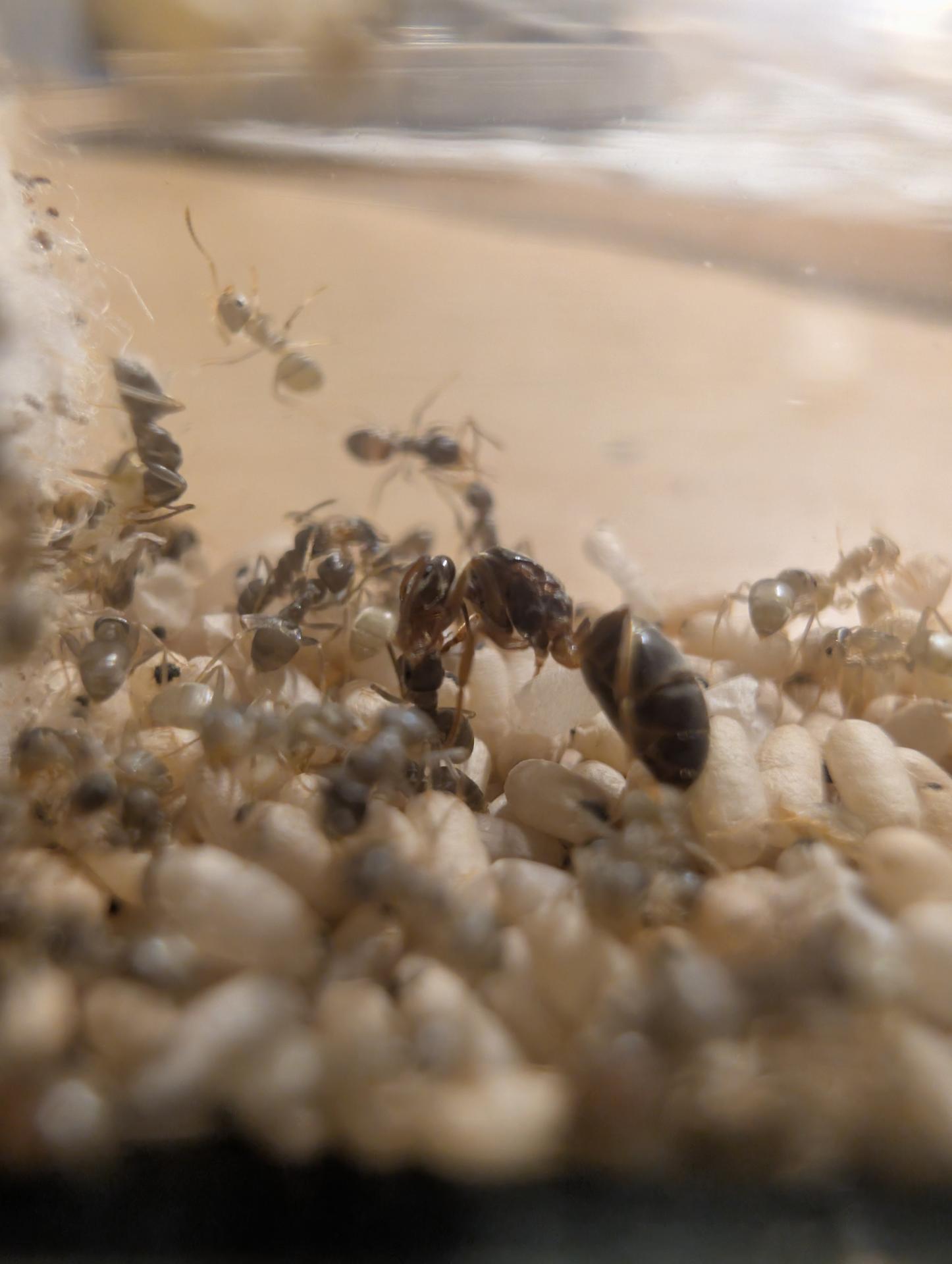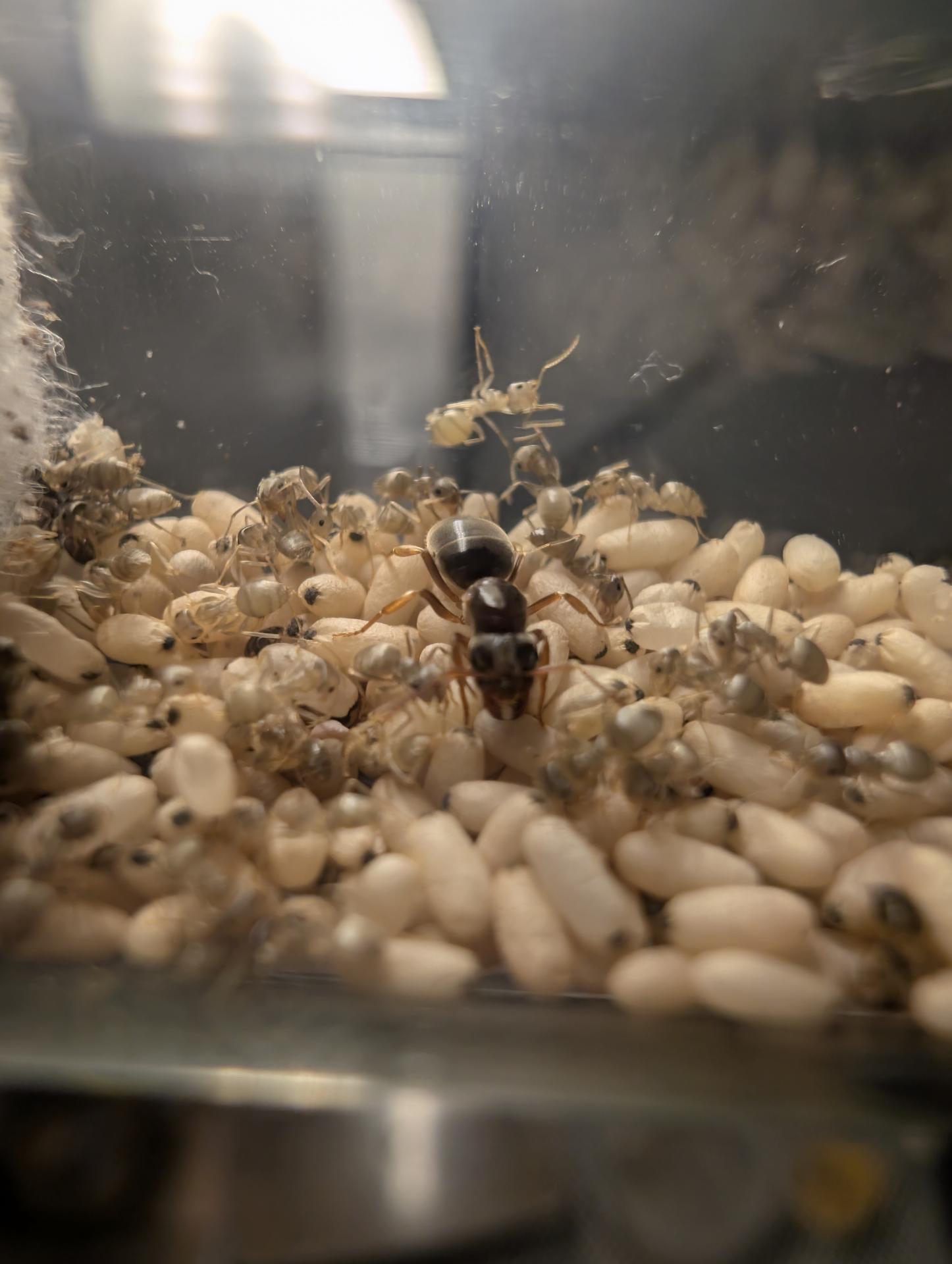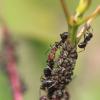As the title suggests this journal will be about my Lasius colonies. I am keeping Lasius cf. americanus, claviger, and aphidicola. Since the last updates in my old journal, they have grown tremendously.
Lasius aphidicola:
Since they killed off all the aphids and all host workers have died, they seem to act a lot like normal non parasitic lasius. They will actively swarm protein sources which is cool because I'd never seen that happen before.
The queen has around 400-500 workers with 200 larvae and even more eggs. They have 3 chambers just pilled with larvae about to pupate although they have no pupae currently.
Swarming a chopped grasshopper!
you can tell they had a huge amount of pupae before just because of all the cocoons.
Lasius claviger:
This colony has gotten a growth spurt after I fed them lots of insects. I also boosted their host worker force by adding some pupae. The queen has around 200 eggs and 20-30 larvae.
Lasius cf. americanus:
I currently have a 2 colonies of Lasius americanus, one has around 50 workers and the other has nanitics.
Lasius americanus colony A
They have no larvae but have eggs and pupae.
Lasius americanus colony B
They have larvae and eggs + nanitics.
the nanitics are out of frame but she is extremely fat.

